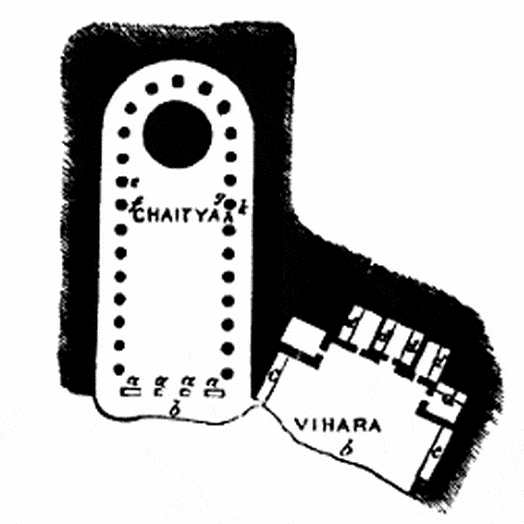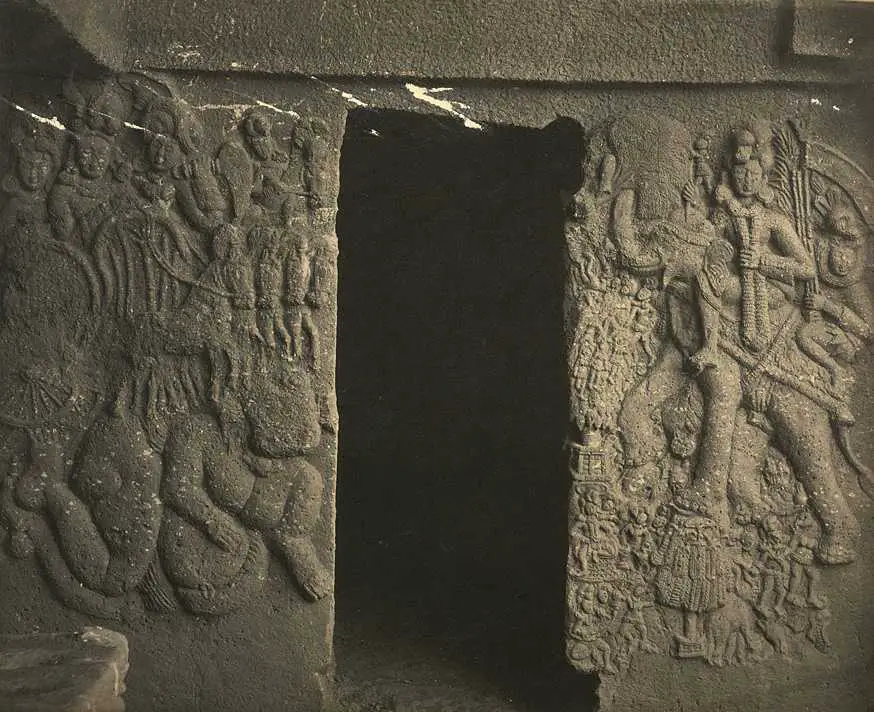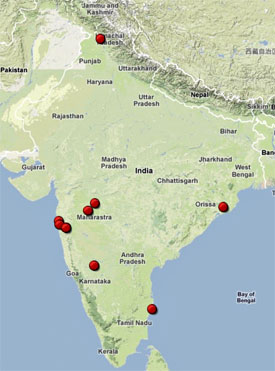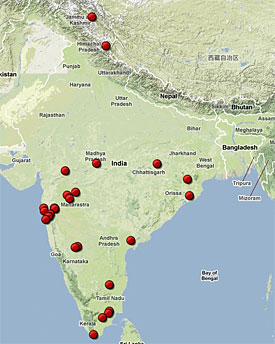World 🢖 Asia 🢖 India 🢖 Maharashtra
Buddhist shrines 🢔 Religious architecture 🢔 Archaeological wonders 🢔 Categories of wonders
Wonder
Bhaja Caves
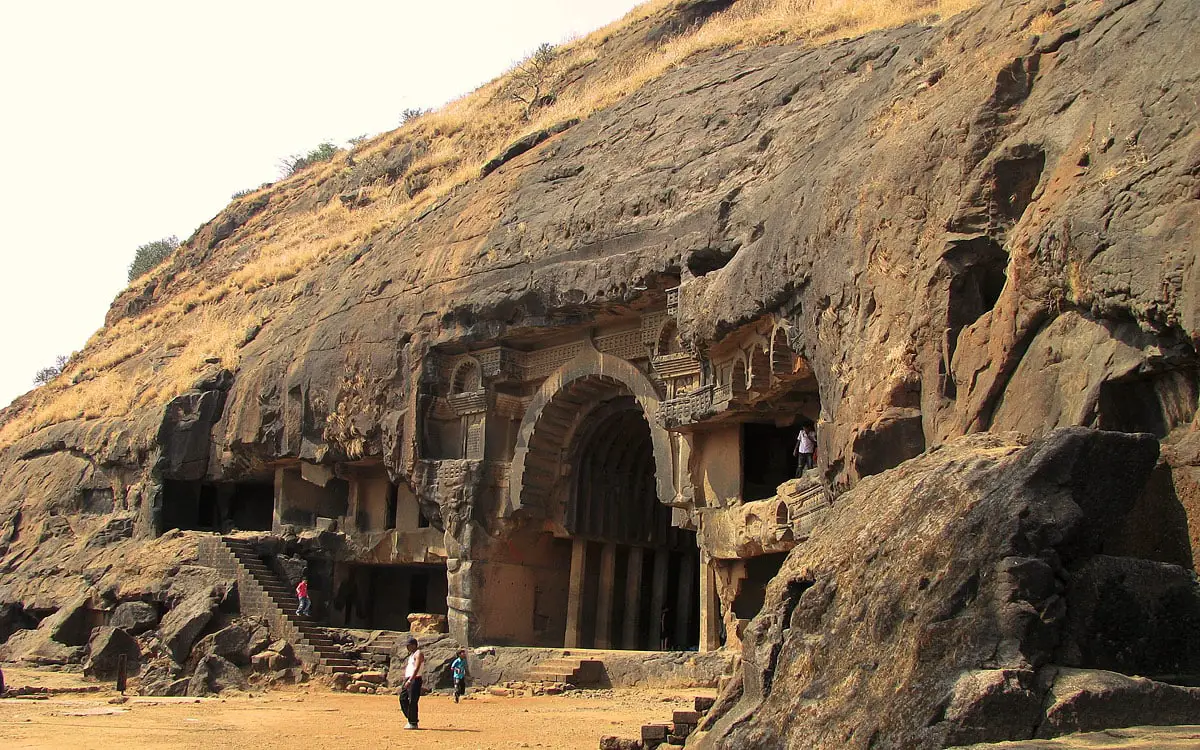
 In short
In short
Significant monument of art, architecture, and history is a group of exquisite rock-cut chambers at the valley of Indrayani River – Bhaja Caves. These 22 rock-cut caves have been created approximately 2,200 years ago, sometimes around 200 BC.
 49.8%
49.8%
GPS coordinates
Location, address
Alternate names
Age
Religion
Map of the site
If you see this after your page is loaded completely, leafletJS files are missing.
 In detail
In detail
There were created several groups of stylistically similar, important early Buddhist rock-cut temples along the ancient trade route from Arabian Sea to Deccan region – Karla Caves, Bedse Caves and also the Bhaja Caves.
Bhaja caves are cut in steep cliff face 120 m above the surrounding plain, all looking to the west.
Bhaja Caves are famed due to their ornate facades. It is believed that this ancient architecture is influenced by even older cave temples – Barabar Caves. Many elements hint that stone cutters copied the elements of ancient wooden architecture.
Stone carvings in Bhaja caves are not very deep, the style is similar to one of the molded terracottas. Sculptures in Bhaja have elaborate headdresses, garlands, and jewelry. It is possible that initially these sculptures were covered with plaster and painted in bright colors.
As is characteristic of early Buddhism, the religious art of caves is characterized by a symbolic representation of Buddha. Sculptures from later times, created after the 4th century AD though present Buddha in his physical forms as well – thus the largest shrine contains paintings of Buddha.
The chaityagriha
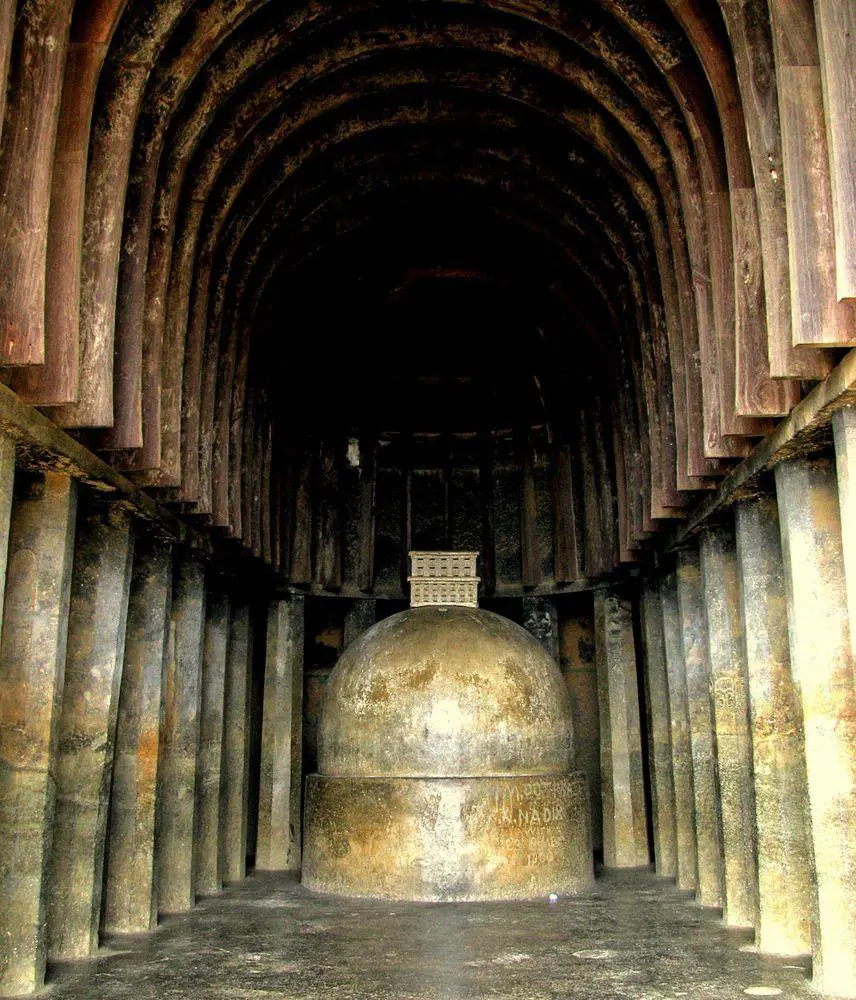
The most impressive is Cave No 12 – a shrine, chaitya. The entrance in this temple belongs to the most photographed monuments in the region – the sight of this enormous, ornate horseshoe arch has no look-alikes. This is also the earliest known large chaitya – chaityagriha (chaityagrha) – in Indian rock-cut caves, although its architecture shows that there existed comparable wooden buildings.
Entrance in this cave temple is completely open now – but in earlier times there was a wooden facade below the arch. The facade imitates fine woodwork and is adorned with human figures leaning over balconies creating an impression of the abundance of life.
The hall behind the facade is roughly 17 m x 8 m large (diverse sources show slightly different values), up to 8.8 m high. 27 octagonal pillars divide it into aisles and allow circumabulatory passage around the stupa. These pillars lean inwards thus imitating wooden structures.
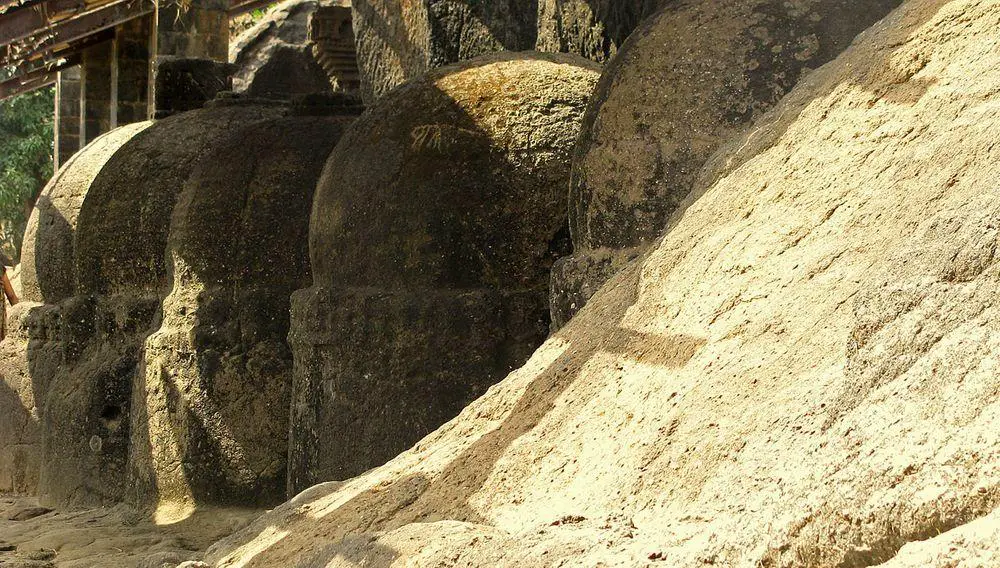
On the top there were added wooden ribs further imitating a freestanding wooden building – these 2,200 years old wooden details are the oldest wooden structural elements here. Wooden beams contain inscriptions left by the benefactors of the temple.
Chaitya contains stupa at its far end with a diameter of 3.45 m, with a hole in the top for a wooden umbrella.
Other caves
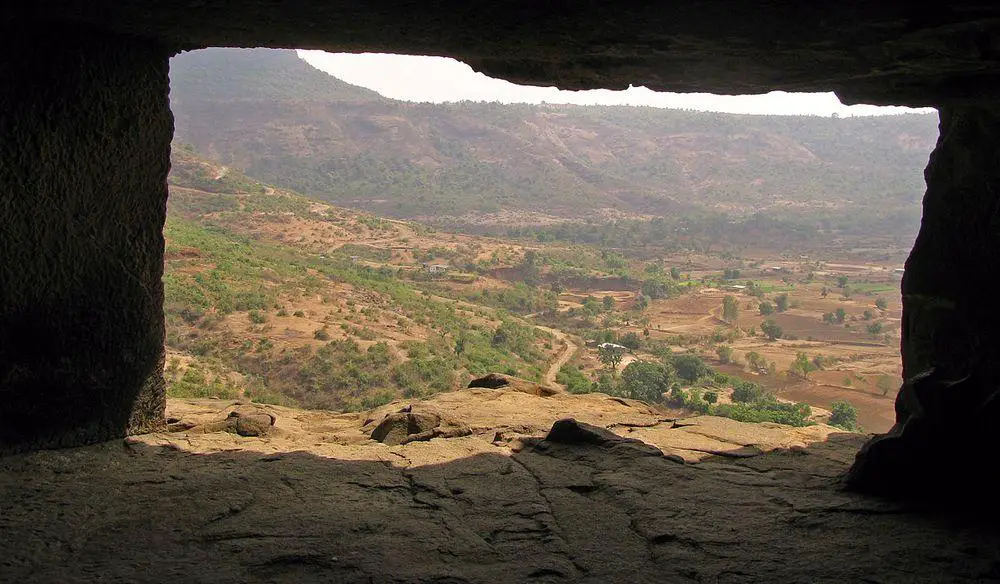
Most of the caves in Bhaja are viharas – ancient Buddhist monasteries. Seven caves contain inscriptions informing about their benefactors, such as an inscription left by Maharathi Kosikiputi Vihnudata in the 2nd century AD.
An interesting and somewhat mysterious monument is an irregular excavation some 50 meters from the great chaitya. It contains a group of rock-cut stupas. 5 of these stupas are located inside a rock-cut chamber and 9 – are outside. It is identified as a cemetery. Some stupas are inscribed with the names of sthaviras – early orthodox Buddhists.
One of the last caves to the south, vihara (Cave No. 18.) contains a rectangular hall with a front pillared verandah. This vihara contains two cells – one at the back and one – on the right side. Pillars have a square base and top and octagonal middle part.
The verandah of cave No.18. contains some of the most interesting sculptural groups in Bhaja, such as:
- A royal person with two woman attendants, driving a chariot by four horses, trampling some demonish figure. Some consider that the royal figure is Sun god Surya vanquishing the demon of darkness – then it is the oldest depiction of this deity.
- A deity – identified as Indra – driving an elephant with attendants carrying a banner and spear. Also, this could be the oldest known depiction of Indra.
Additional beauty to this area is added by a small waterfall with a pool below it. It is located south of the caves and has water during the monsoon period.
References
- Bhaja Caves, Bhaja. Archaeological Survey of India. Was accessed on April 10, 2010, now not active.
- Benoy K. Behl., Grandeur of caves. Frontline, Vol 24, Sep.22 – Oct.05, 2005. Accessed on July 11, 2018.
- Bhaja Caves. Bharatonline.com. Accessed on April 10, 2010.
Bhaja Caves are included in the following lists:
 Linked articles
Linked articles

Rock-cut architecture and sculptures
Rock-cut architecture is a very ancient form of architecture – the oldest structures are more than 5 thousand years old. The resistivity of the natural stone and the constant climate inside these structures has preserved many art values around the world.

Wonders of India
India is the seventh-largest country in the world by area, and, naturally, such a large area contains a huge amount of exciting attractions…
Wondermondo considers that India is the second richest center of architectural heritage in the world after Europe and maybe no single country in the world can match it in this respect.

Buddhist shrines
Buddhism is one of the world religions and at the same time is a spiritual philosophy with diverse traditions, beliefs, and practices. There exists a rich tradition of architecture expressed in Buddhist temples and monasteries.
 Recommended books
Recommended books
Illustrations Of The Rock-cut Temples Of India
This is a reproduction of a book published before 1923.
We believe this work is culturally important, and despite the imperfections, have elected to bring it back into print as part of our continuing commitment to the preservation of printed works worldwide.

